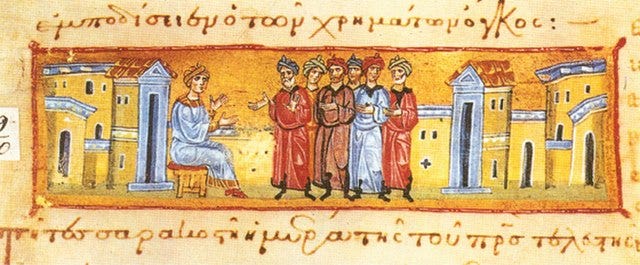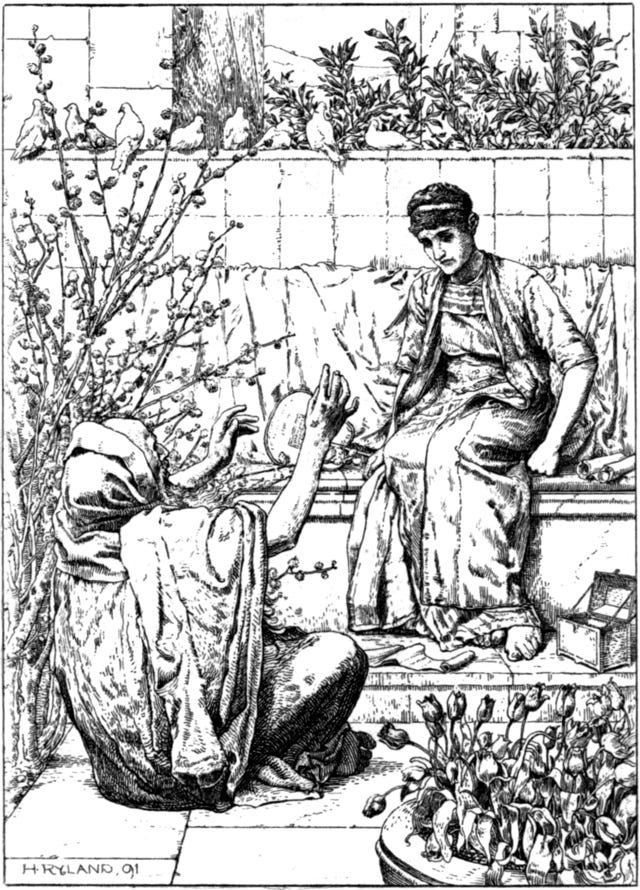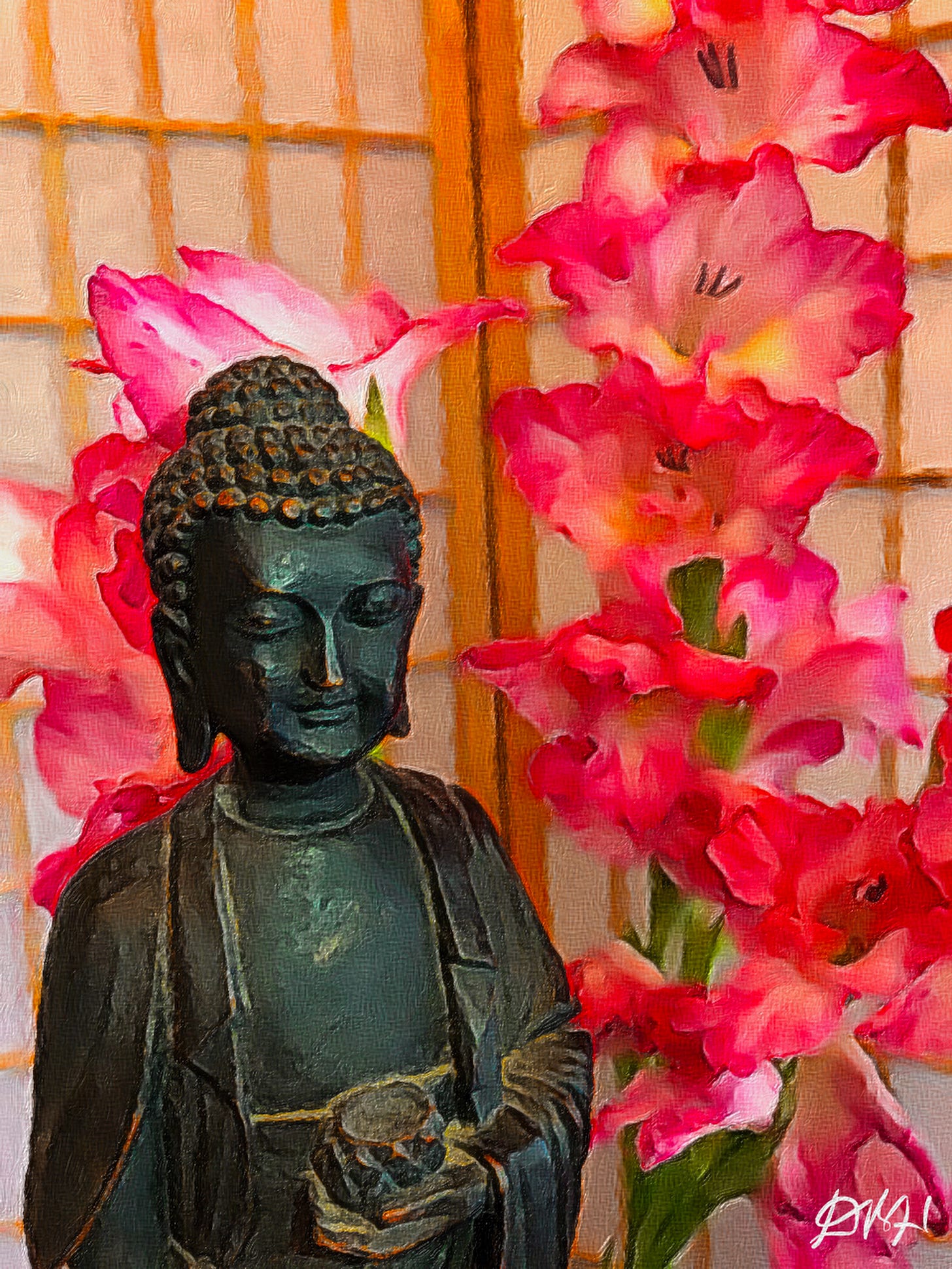[I have roused this article out of my files as a complement to my last post. I have a certain affection for it. Time has dimmed the memory of its original publication, but I vividly recall receiving a letter (by way of the journal where the article first appeared) from a recent American convert to Orthodoxy from Evangelicalism informing me that it was impossible that any errors or confusions had ever insinuated themselves into Orthodox hagiography, and therefore it must be taken as infallible dogma that a Christian kingdom had in fact been established in India in late antiquity, and that I was in danger of eternal damnation so long as I perversely denied the fact. That was bracing enough; but it was as nothing compared to an email I received from a recent American convert to Catholicism, also from Evangelicalism, informing me that the supposed Buddhist provenance of the legend of Barlaam and Josaphat was a fabrication of the Free Masons. Ah, sancta simplicitas. Ah, religio pura.]
In 1571, the Doge of Venice presented King Sebastian of Portugal with certain relics of St Josaphat of India (including, if memory serves, a fragment of his spine). This was a lavish gift, to say the least. No legend of the late Middle Ages and the early modern period was more famous throughout the entire Christian world than the tale of Barlaam and Josaphat, nor were there very many saints more beloved than its eponymous protagonists. Their joint feast—celebrated on 27 November in the West and 26 August in the East—was observed with a special relish by Christians of every land. Josaphat in particular was revered as the very archetype of the holy prince, a child of the blood royal who was willing to forswear all the power and wealth of his earthly kingdom for the sake of the Kingdom of God. The surrender of any portion of his sacred remains was no small gesture.
Alas, the relics were not authentic, though the Doge had no way of knowing this (and I doubt King Sebastian was ever any the wiser). They could not be, for the simple reason that there never was a Christian King Josaphat in India. It would not, however, be entirely correct to say that either he or his story was simply the invention of pious imagination, as was, say, St. Christopher. There was, in fact, a real person—a very famous person, as it happens—behind the figure of the Christian saint; he simply was not a Christian. He was, rather, the man who in his own day came to be called Śākyamuni —“sage of the Śākya clan”—but whose given name tradition records as Prince Siddhārtha of the house of Gautama: in short, the Buddha.
It is actually not very difficult to trace out the process by which the story of the Buddha’s youth and enlightenment was transformed into what was for centuries one of the most popular and influential of Christian legends. At least, a fairly clear history of textual transmission can be reconstructed, with only a few insignificant lacunae. The original of the narrative was no doubt one of the standard Indian versions of the Buddha’s life—perhaps the Lalitavistara Sūtra—which entered into Persian literature, almost certainly at some point in the sixth century, in the form of the story of Bilauhar and Budisaf. This latter name is simply the Persian rendering of the word “bodhisattva”, which means “enlightened being” and is used of one who is on the way to Nirvana (or, in the Mahayana, one who is on the way but who holds back to devote himself to the salvation of other beings). The story, it appears, was especially favored by the Manicheans. By the eighth century, when Persia was the seat of the Abbasid Caliphate, a translation of the story had appeared in Arabic under the title Kitab Bilawhar wa-Yudasaf, the “Book of Bilawhar and Yudasaf”.
It was not, however, until the tenth century that the two principals in the tale were “baptized” by some unknown Georgian translator, who produced a version of the book in his native tongue and transformed it—by really only the most superficial of cosmetic alterations—into a story about the Christian communities of India: the tale of Balahvar and Iodasaph (known also simply as the Balavariani). Then, at some point in the early eleventh century (or thereabouts) the story made its way to Constantinople and became the Greek legend of Barlaam and Ioasaph (later erroneously attributed to John of Damascus), which in 1048 was translated into Latin as the story of Barlaam and Josaphat. Thus a new and wonderfully picturesque hagiographic legend became the common property of all Christian peoples. And thus, under the many veils acquired in the course of his millennial narrative migrations—or perhaps one should say transmigrations—the “bodhisattva” of the Śākyas became the “Josaphat” of the Christians, and the Buddha entered incognito into the calendar of Christian saints.
The tale’s popularity is easy to understand. It is simply a very good story, and rather moving. At least, this is true of—among the Christian renderings—the Georgian text, which is far more artistically assured and uncluttered than its successors. The Greek version is often ponderously didactic, interlarded as it is with edifying discourses elaborating upon the purer and simpler spiritual discourses of the earlier translation. The story begins with a certain King Abenes (Abenner in the Greek), whose realm once upon a time lay somewhere in India, and who—out of zeal for his native gods—instituted a policy of persecution against the Christians under his rule, inspired in part by the conversion and obstinate fidelity of one of his knights to the alien creed.
At the birth of Abenes’s son Iodasaph, two court astrologers produce two quite incompatible prophecies regarding the child’s future; one says the boy will come to be one of the most powerful rulers of his age, while the other says the boy will become a spiritual leader who will guide others upon the path of truth. To assure that the former prophecy will prove correct rather then the latter, Abenes has a city of pleasure built in which Iodasaph is to be reared without any exposure to suffering, privation, age, or death. He then orders the expulsion of all Christians from his kingdom. With the aid of one of his tutors, however, Iodasaph—now grown—learns of his father’s desire to shield him from a true understanding of the world; so, journeying out one day from his city, he becomes acquainted with the full spectrum of human misery—blindness, infirmity, poverty, age, death—and with the truth of its inevitability for all men and women.
He then turns for instruction to a Christian hermit named Balahvar who, defying Abenes’s decree, enters Iodasaph’s house and relates to the prince a series of parables. These take up about a third of the book, as it happens, and are quite marvelous; taken together, moreover, they constitute a fairly exotic confection, being as they are equal parts Buddhist and Biblical in content. (The third and best of the parables, incidentally—the story of the elephant, the dragon, and the mice—was one Tolstoy cited as contributing profoundly to his own spiritual awakening.) Iodasaph is converted and Bilahvar departs.
Abenes is enraged when he learns of what his son has done, and employs every means at his disposal to sway Iodasaph from the path of renunciation. With the help of a heathen ascetic named Thedma, he finds a man who looks exactly like Bilahvar to “debate” the priests of the old religion publically, but Iodasaph is not deceived by the imposter (who, in fact, is soon himself converted to Christianity). Abenes then offers Iodasaph a ravishingly beautiful woman for his wife, and Iodasaph is tempted to accept; but, warned in a dream of the perdition he is courting, he ultimately resists. Finally, Abenes cedes half his kingdom to his son, and this Iodasaph accepts, as it allows him to provide a safe haven for the Christians of his lands.
Abenes is finally so impressed with the justice and wisdom of his son’s regime that he too converts to Christianity and abdicates his throne in his son’s favor. Even the Hindu sage Thedma, after a period of resistance, yields to the gospel. After Abenes passes away, Iodasaph desires to retreat to the wilderness as a hermit, but this he must delay doing for a variety of reasons. At last, however, he is able to join Bilahvar in the wild, and the two thereafter live together a life of prayer and self-abnegation, at least until Bilahvar dies. Iodasaph continues on in the ascetic life for several years more, until he too dies.
There is, I suppose, no great moral to be extracted from the curious history of the legend of Barlaam and Josaphat, apart perhaps from the rather banal and ordinary observation that the partitions between religious cultures in the pre-modern world were far more porous than we typically tend to imagine, and the channels of literary and cultural influence far wider. For me, though, the entire episode (for want of a better word) prompts two trains of reflection, each of which terminates in a fairly pregnant question.
First, it is rather remarkable—as any reader of the Balavariani with a knowledge of both Christianity and Buddhism should note—how purely and even exquisitely Buddhist the entire religious atmosphere of the story is. The spiritual counsels around which the book is built all concern the transience of earthly pleasure, the unreality of common experience, and the impermanence of all things; and salvation is presented throughout entirely in terms of renunciation and enlightenment. At times, there is not even the thinnest superimposition of Christian motifs upon the surface of the text. What then might we conclude about the spiritual temper of much of the Christianity of the Middle Ages and early modern period, and its relative affinity with the spiritual temper of Indian Buddhism, from the ease with which Buddhist teachings could be absorbed without scandal, or even any sense of strangeness, by the Christian cultures of both East and West after the tenth century?
And, second, surely there is some quality of irrevocability in any declaration of sainthood. Admittedly, Josaphat was never the object of any formal process of canonization—which is a process, apparently, of which there is no provision for revocation. Thus he does not linger on in the Roman calendar in the embarrassing manner of Pope Marcellinus, who was made a saint more or less as a result of a clerical error, but who there is good reason to believe was actually an apostate during the Emperor Diocletian’s persecutions of the church (not to worry: an entirely apocryphal account of Marcellinus’s martyrdom was later inserted into the Liber pontificalis, which squares all accounts nicely). Nevertheless, he was revered by Christians for many hundreds of years, his feast was observed with liturgies and masses, and his relics were treasures of great cities and gifts of mighty princes. What then might we make of the delightful oddity that, in a sense, and admittedly under a foreign guise, the Buddha was for centuries venerated by Christians as one of their more beloved saints?
I confess, I should like to make quite a great a deal of it, though that is merely a matter of personal temperament. I sometimes think I am possessed of an anima naturaliter buddhistica. Certainly the Dhammapada and Śāntideva’s Bodhicaryāvatāra occupy suspiciously high positions on my list of favorite spiritual readings. But even those of us who feel not the slightest stirring of spontaneous reverence at the sight of a particularly grand Buddharūpa or at the distant knelling of Asian temple bells might still pause to ask ourselves whether the story of this legend’s long metamorphic journey from East to West—from dharma to evangel, so to speak—is not some kind of example of the irony of providence.







As an American convert to Orthodoxy from Evangelicalism… sorry? At the very least, to defend my good name, we’re not all like that (though it is a depressingly common trend).
I’m with the tenth century Christians, inasmuch as I can skip over to much Buddhist literature (especially the Dhammapada) without skipping a beat; it’s always been a very natural transition for me. From what I’ve heard, the feeling is apparently mutual, at least when it comes to the Sermon on the Mount.
Do you have any resources discussing the accidental canonization of Pope Marcellinus? That’s hilarious (though, if you will, his accidental canonization could be seen as a providential exposé of the inevitability of universal salvation).
A version of of Barlaam's tales appears in the casket choice decreed by Pportia's father in "The Merchant of Venice". To my mind, it is an illustration of the powers of stories to cross boundaries of culture, faith, and age via the unconscious (often much wiser and more open than the stratifying conscious mind and presumably the reason Jesus taught with parables).